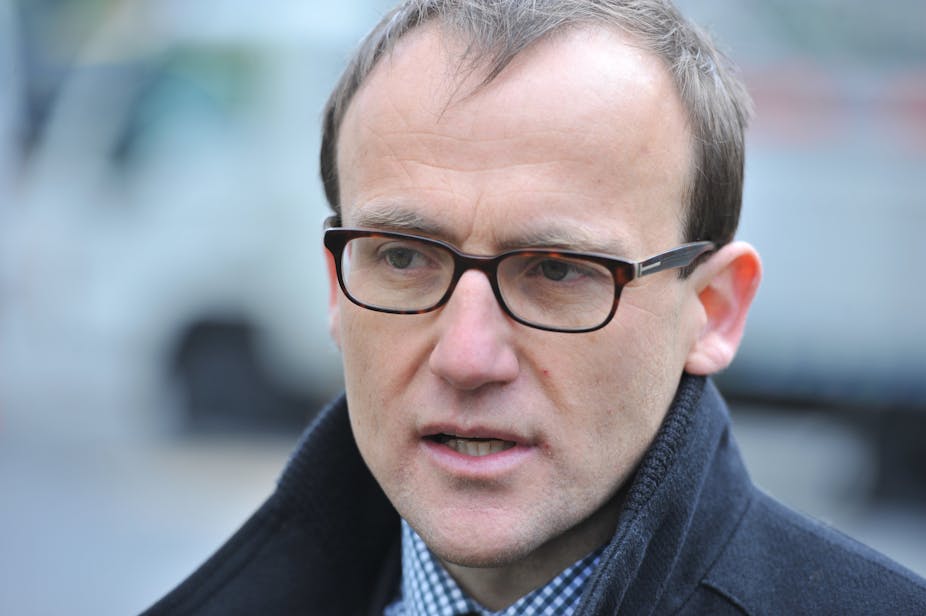Kevin Rudd’s restoration to the ALP leadership may yet be an electoral game-changer as the polling day of September 7 fast approaches. Recent opinion polling suggests Labor’s primary vote has returned to close to its 2010 pre-election levels, but its resurgence may now undercut the Greens’ primary vote.
In light of this and other events, now is a good a time to reassess the state of play in the federal Victorian seat of Melbourne: tipped to be one of the most intensely contested seats in 2013.
Melbourne is an inner metropolitan seat with a 46 square kilometre footprint. Prior to the 2010 election it was a Labor heartland seat, continuously held by the party since 1904 and producing three ALP federal ministers.
But like many trendy inner metropolitan seats, Melbourne bears only a faint resemblance to its former working class roots.
The extent of Melbourne’s transformation is very clearly revealed by the Australian Bureau of Statistics’ 2011 Census data. The electorate of Melbourne has the eighth highest median weekly household income (A$1998) in Victoria, making it one of the state’s most affluent divisions. Just under 56% of the electorate belongs to either a managerial or professional occupational based category. It is also a highly educated electorate. 48.2% of the electorate holds a tertiary degree and/or possesses technical and further education qualifications.
But perhaps its most striking characteristic is the youthfulness of the electorate. The median age of Melbourne is 31 years, making it the second youngest federal seat in Australia. It has one of the highest concentrations of 20-24 year olds (14.6%) courtesy of the two universities that lay within its boundaries.
The demographic characteristics of Melbourne voters partly accounts why the Greens’ Adam Bandt was sufficiently competitive to win the seat against Labor’s Cath Bowtell in 2010.
But if a week is a long time in politics, then three years must surely be an entirely new space-time continuum. What then are the challenges and opportunities for Bandt and Bowtell as we near the 2013 polls?
Bandt’s chances are strengthened by the simple fact of his incumbency. As deputy leader of the Greens, and their only representative in the lower house, Bandt has been provided with a rare platform to consolidate his profile. This has further improved his prospects of maximising the electoral dividend that is often derived from being a first term MP.
Bandt’s campaign budget is also shaping up to be a little more fuller this time around. The Electrical Trades Union, which stumped up $125,000 in 2010, has pledged $300,000. Bandt can further count on the support of the United Firefighters Union (although it is unclear what this entails), as well having being identified by the National Tertiary Education Union as one of the beneficiaries of its $1 million campaign against the Coalition.
The other factor that might enhance Bandt’s prospects is the return of Kevin Rudd to the Labor leadership. Although this might seem counter-intuitive in light of recent electoral shifts, private polling commissioned by the Greens suggests that Rudd is particularly unpopular among Melbourne voters. Anti-Rudd sentiment is likely to have strengthened even further in light of the Government’s new hardline position on asylum seekers, a policy decision which many of Melbourne’s more cosmopolitan voters will find distasteful.
However, things are also looking up for Bowtell.
The federal redistribution of Melbourne, which was concluded in 2011, has resulted in parts of the electorate being transferred to other divisions. While considered only a negligible adjustment to Melbourne’s boundaries, this is not without potential effect, particularly if the contest is close. The ABC’s Antony Green estimates that the redistribution is likely to reduce Bandt’s two party preferred margin from 4.7% to 4.2%.
The other growing certainty is that the Liberals will preference Bowtell ahead of the Greens. This represents a critical boost for Bowtell given the important role the Liberal preferences played in securing Bandt’s election last time. Bandt received approximately 78% of the Liberals’ preferences in 2010, enabling him to secure a majority of the two party preferred vote at the last election.
However, there are other seemingly trivial but potentially important details, which could affect the result. One variable, although one which will not be known until much closer to the election, is the rank ordering of candidates on the ballot paper.
Where a candidate is positioned on the ballot paper is important because it determines whether a candidate may benefit from the donkey vote phenomenon. Donkey votes are normally cast by apathetic voters who express their lack of interest in the election by numbering every box on the ballot paper from the top to bottom in the order in which the candidates appear on the ballot paper. Although there are no reliable estimates of its likely benefits, voting expert Brian Costar estimated in 2010 that 2% of all votes fall into this category.
It is instructive to note that in 2010, Bandt drew the number two position on the ballot paper while Bowtell, appeared second last. At the risk of labouring the point, in a close ballot, these small details are important.
The balance of probabilities currently favour Bowtell. But if there is one thing that the last three years have repeatedly shown us, nothing is an absolute certainty.

